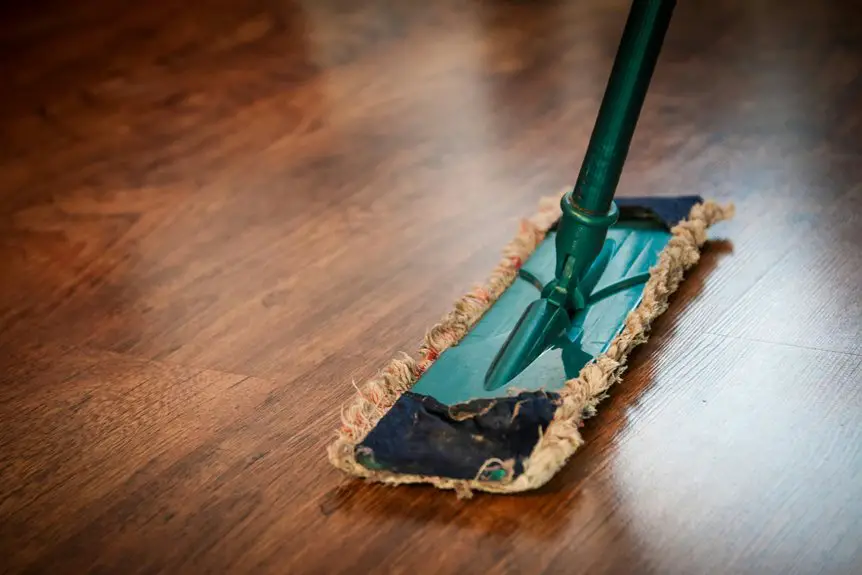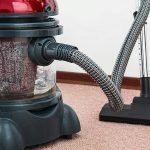Maintaining your mousepad is crucial for its longevity and your overall computing experience. You might not realize how much dirt and grime can accumulate over time. Regularly checking for signs of wear can make a significant difference. Whether you've got a fabric or hard surface, each type requires specific care. Curious about the best cleaning methods and maintenance tips? Let's explore how to keep your mousepad in top shape.
Table of Contents
Key Takeaways
- Regularly check for signs of dirt, such as sticky surfaces or visible stains, to determine when to clean your mousepad.
- For fabric mousepads, soak in warm water with mild detergent, scrub stains gently, and air dry completely.
- For hard mousepads, use mild soap and water or isopropyl alcohol with a microfiber cloth to maintain cleanliness.
- Clean spills immediately to prevent stains and odors, and avoid direct sunlight to protect the material from fading.
- Replace your mousepad when you notice fraying edges, worn surfaces, or poor tracking performance.
Understanding Different Types of Mousepads
When you're choosing a mousepad, it helps to understand the different types available, as each one can affect your gaming or work experience.
There are cloth, hard, and hybrid mousepads. Cloth mousepads provide a smooth surface, ideal for precision and comfort, making them popular among gamers. Hard mousepads, often made from plastic or metal, offer faster gliding and are easier to clean, perfect for those who prefer speed over control. Hybrid mousepads combine both materials, giving you the best of both worlds.
Furthermore, consider size and thickness; larger pads offer more space for movement, while thicker pads can provide extra cushioning.
Ultimately, selecting the right mousepad can enhance your overall performance and enjoyment.
Signs That Your Mousepad Needs Cleaning
Selecting the right mousepad can enhance your gaming or work experience, but maintaining it's just as important. You might notice signs that indicate it's time for a cleaning.
If your mousepad feels sticky or grimy, that's a clear signal. Any visible stains or discoloration are also signs that dirt has built up. Additionally, if your mouse isn't gliding smoothly or is skipping, it could be due to a dirty surface.
You might also see dust or debris collecting around the edges, which can affect performance. Regularly checking for these signs ensures your mousepad stays in top condition, helping you maintain optimal precision and comfort during use.
Don't overlook these indicators—cleaning can prolong its lifespan.
How to Clean Fabric Mousepads
Cleaning your fabric mousepad doesn't have to be a hassle.
First, you'll want to gather the right cleaning supplies to ensure a thorough job.
Then, we'll go over effective washing techniques to keep your mousepad looking fresh and functional.
Gather Cleaning Supplies
To effectively clean your fabric mousepad, you'll need a few essential supplies.
Having these items on hand will make the cleaning process smoother and more efficient. Here's what you should gather:
- Mild detergent: Look for a gentle soap that won't damage the fabric.
- Soft brush or sponge: This will help you scrub away dirt without harming the surface.
- Clean water: Use lukewarm water to rinse and avoid any potential abrasiveness.
Once you've collected these supplies, you're on your way to restoring your mousepad's cleanliness and functionality.
Washing Techniques Explained
When it comes to washing fabric mousepads, there are several effective techniques you can use to ensure a thorough clean.
First, fill a basin with warm water and add a mild detergent. Gently submerge your mousepad and let it soak for about 10 minutes.
After soaking, use a soft brush or cloth to scrub away any stains. Rinse the mousepad under cool water until all soap is removed.
If you prefer, you can also toss it in the washing machine on a gentle cycle, but make sure to air dry it completely afterward.
Avoid using harsh chemicals or bleach, as these can damage the fabric.
Regular cleaning will keep your mousepad looking fresh and extend its lifespan!
How to Clean Hard Mousepads
Cleaning your hard mousepad is straightforward, but you need the right solutions to get the job done effectively.
You can use mild soap and water or specialized cleaners to avoid damaging the surface.
After cleaning, make sure you dry it properly to keep it in top shape for smooth gliding.
Cleaning Solutions to Use
Although hard mousepads are durable, they still collect dust and grime that can affect your performance.
To keep your mousepad clean, use the right cleaning solutions. Here are some effective options:
- Mild dish soap: Mix a few drops with warm water for a gentle yet effective cleaner.
- Isopropyl alcohol: This helps disinfect and remove stubborn stains without damaging the surface.
- Microfiber cloth: Use this to wipe down your mousepad, as it's soft and won't scratch the surface.
Simply apply your chosen solution, scrub gently with a cloth, and rinse thoroughly.
Keeping your hard mousepad clean not only enhances its lifespan but also improves your overall gaming or work experience.
Drying Techniques to Apply
After you've cleaned your hard mousepad, the next step is to dry it properly to prevent any moisture damage.
Start by gently shaking off excess water and then use a soft, lint-free cloth to wipe the surface. Avoid using rough materials that could scratch the surface.
You can also air dry your mousepad by placing it in a well-ventilated area, but steer clear of direct sunlight to avoid warping.
If you're in a hurry, use a fan to speed up the drying process, keeping it at a safe distance.
Once it feels completely dry, your mousepad is ready to use again. Proper drying ensures a longer lifespan and better performance.
Tips for Maintaining Your Mousepad
To keep your mousepad in top shape, consider these essential maintenance tips.
Regular care ensures it lasts longer and performs better.
- Clean spills immediately: If you accidentally spill something, wipe it up right away to prevent stains and odors.
- Avoid direct sunlight: Keep your mousepad out of direct sunlight to prevent fading and material degradation.
- Store it properly: When not in use, roll or lay your mousepad flat to avoid creases and warping.
When to Replace Your Mousepad
Even with regular maintenance, there comes a time when your mousepad needs replacing. Look for signs like fraying edges, a worn-out surface, or a lack of grip. If your mouse isn't tracking smoothly, it might be time for a new pad.
| Sign | Action |
|---|---|
| Fraying edges | Replace immediately |
| Worn-out surface | Consider replacing |
| Poor tracking | Test with a new pad |
A good mousepad enhances your gaming or work experience, so don't hesitate to invest in a replacement when necessary. Keeping an eye on these indicators will help you maintain optimal performance and comfort.
Frequently Asked Questions
Can I Use a Washing Machine to Clean My Mousepad?
You shouldn't use a washing machine to clean your mousepad. Instead, gently hand wash it with mild soap and water. This method preserves its material and ensures it stays in great condition for longer.
Are There Specific Cleaning Products I Should Avoid?
You should avoid harsh chemicals, bleach, and abrasive cleaners when cleaning your mousepad. These can damage the material and affect its performance. Stick to mild soap and water for the best results.
How Often Should I Clean My Mousepad?
You should clean your mousepad every few weeks, especially if you notice dirt or stains. Regular maintenance keeps it in top shape, ensuring smooth gliding and a better overall experience while you work or game.
Will Cleaning Affect My Mousepad's Surface Texture?
Cleaning your mousepad won't ruin its surface texture if you use the right methods. Regular maintenance keeps it smooth and functional, so you can enjoy optimal performance without damaging the material or affecting its grip.
Can I Use a Dryer to Dry My Mousepad?
You shouldn't use a dryer to dry your mousepad. The heat can damage the material, warp its shape, and affect its performance. Instead, air-dry it flat in a well-ventilated area to maintain its quality.




